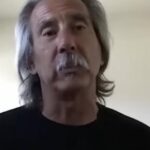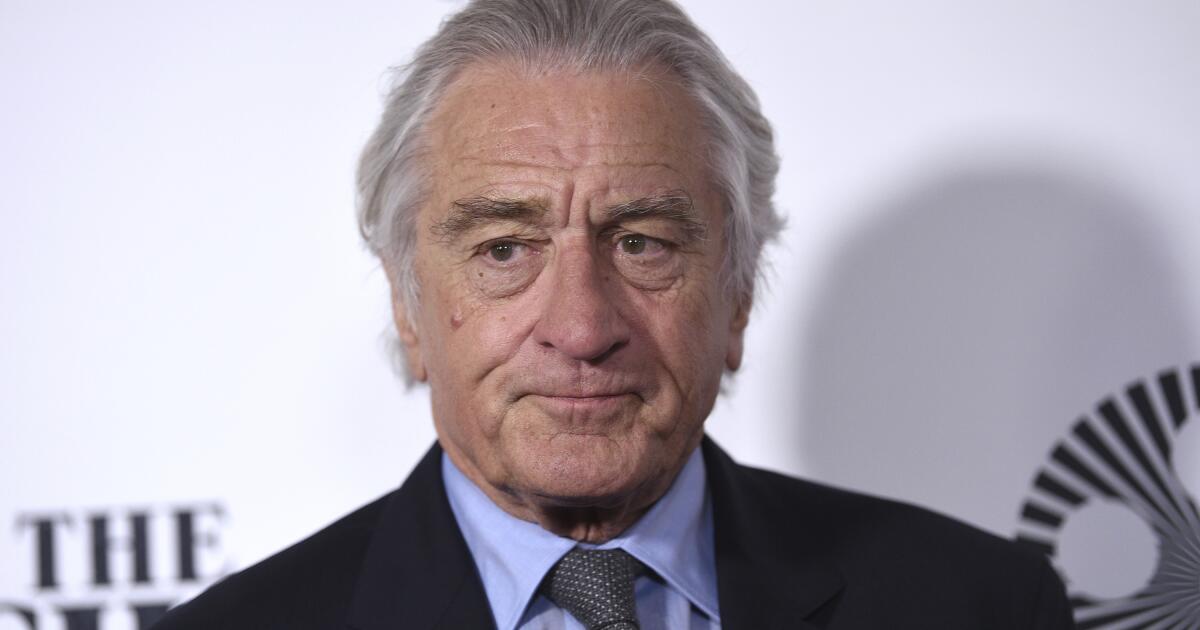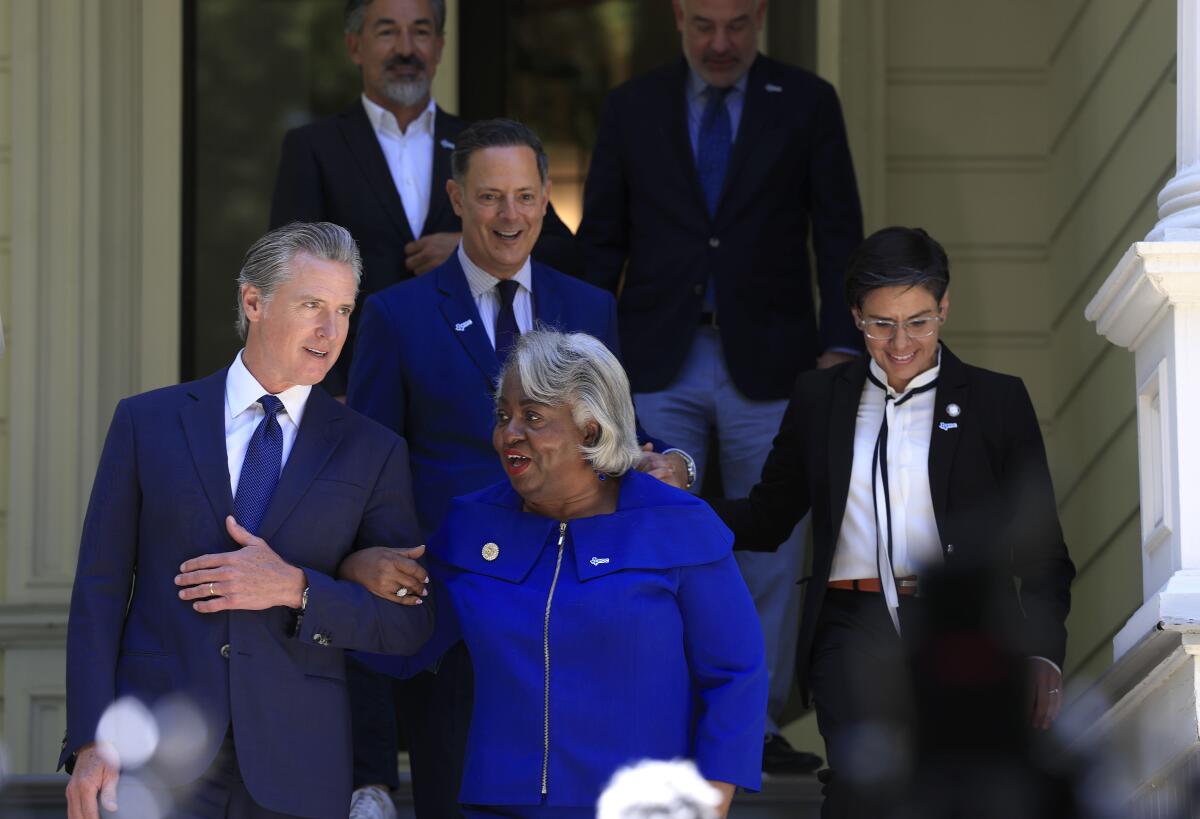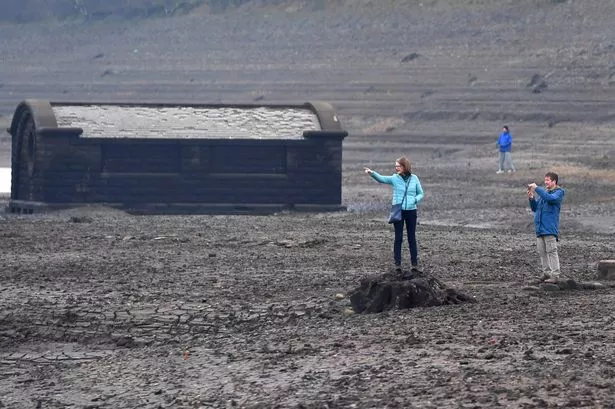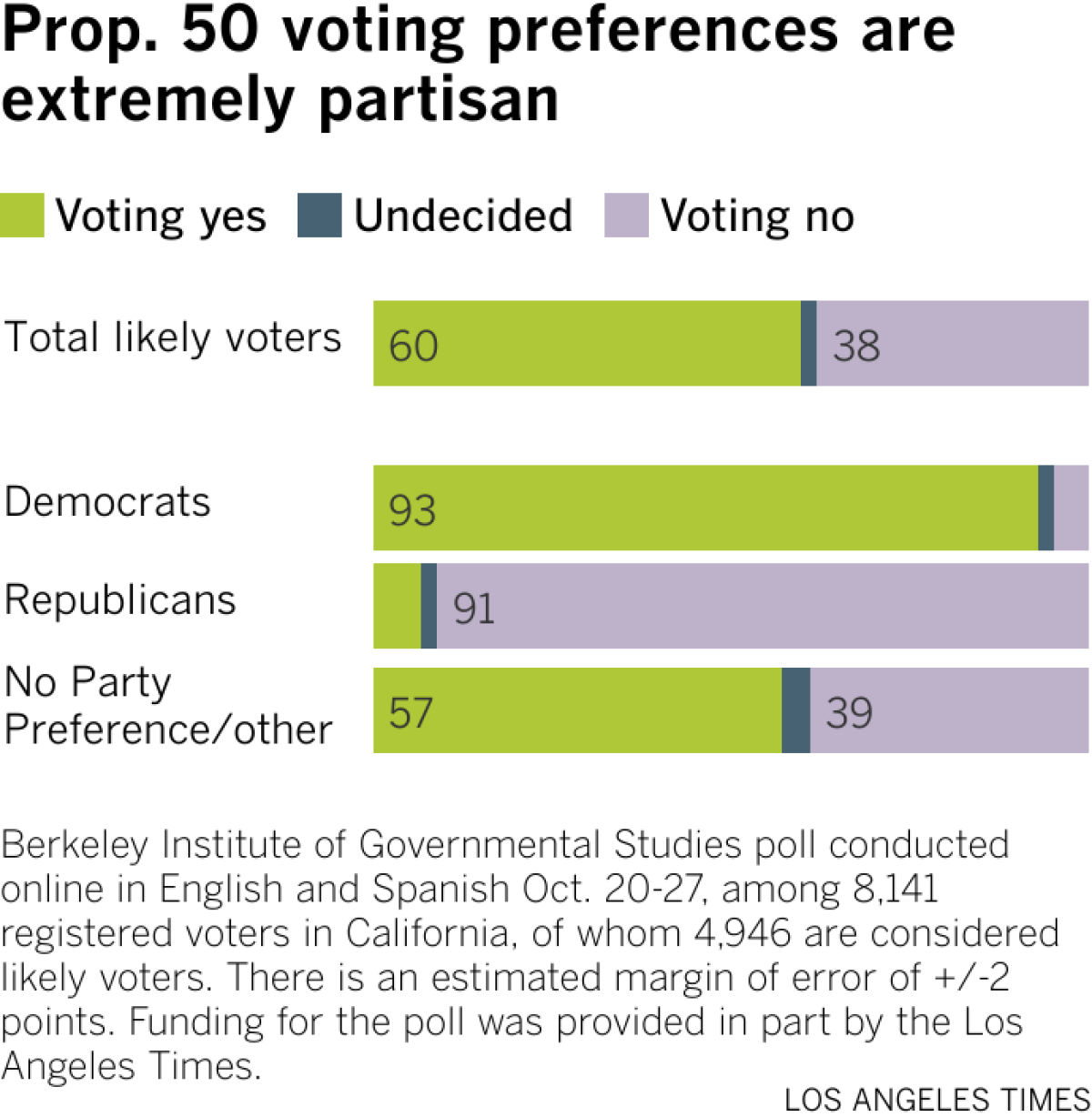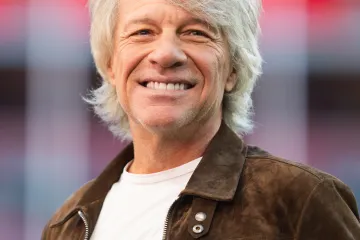Contributor: California was an ‘earthly paradise’ for Jews. Is it still?
California, described by one observer in the late 19th century as “the Jews’ earthly paradise” for the economic and social promise it held, seems to have become newly hostile to Jewish people in recent years. More than any other place on Earth, Jews have shaped much of California’s progress, from Levi Strauss and the founders of the entertainment industry to numerous other leaders in culture, science, real estate and finance.
The current assault expresses itself in politics, in schools from elementaries to universities, on the streets, in literary circles and in anti-Zionist graffiti.
Erwin Chemerinsky, the dean of the UC Berkeley Law School (and my fellow contributing writer in the L.A. Times opinion section), expressed two years ago that “nothing has prepared me for the antisemitism I see on college campuses now.” The Louis D. Brandeis Center for Human Rights Under Law and Jewish Americans for Fairness have filed a lawsuit against Berkeley, alleging “longstanding, unchecked” antisemitism.
This is not just a local issue. California’s population of 1.2 million Jews is roughly three times the size of each of the three largest Jewish diaspora communities outside the U.S. — in France, England and Canada. Los Angeles itself is the world’s third-largest Jewish city. Demographer Ira Sheskin noted recently that unlike New York City, which has lost roughly half its Jewish population since 1950, California’s Jewish populace has continued to grow, albeit more slowly in recent years.
Despite their relative demographic vitality, many California Jews feel increasingly isolated. Even in Hollywood, the Writers Guild, long a bastion of fashionable progressivism, suddenly decided to be neutral rather than making a statement on the Israel-Hamas war. Some leading figures, like Maha Dakhil, co-head of motion pictures at CAA, accused Israel of “genocide,” and others now refuse to work with Israeli film companies. Two thousand actors signed a statement outlining Israel’s “war crimes” with no mention of Hamas’ atrocities.
The political fallout has been considerable, and may become more so. Most California Jews are Democrats, according to the Pat Brown Institute; 20-30% tilt to the GOP. But the anti-Israel caucus, both here and nationally, is almost entirely made up of Democratic progressives. In a show of power, these activists even succeeded in disrupting California’s 2023 state Democratic Party convention. Many are justifiably uncomfortable with the GOP, citing the influence of antisemitism from the likes of Tucker Carlson and Candace Owens, and some critics of Israel have found the Democratic Party too cozy with Jerusalem and its supporters, but generally the Republicans, including MAGA young people, are clearly more philosemitic than the Democrats.
At a local level, politics in many cities have sent a message to the Jews of California. Anti-Israel resolutions have passed in Oakland, Stanton, Burbank and Richmond, where the progressive-controlled City Council accused Israel of “ethnic cleansing” and “apartheid.” Oakland called for an immediate ceasefire without mentioning Hamas’ atrocities. Demonstrators there even suggested that Israel murdered its own people as a pretext to attack Gaza.
And California’s youth are being groomed to hate Israel with hostile curriculums, setting up a whole new generation of antisemitism in the future and in the meantime putting Jewish teachers at risk. San Francisco has experienced anti-Israel walkouts in 10 high schools, organized by an advocacy group with access to student addresses.
At the same time, the drive to “globalize the intifada” affects California’s Jewish community directly. It has forced at least one L.A. synagogue to relocate its services; others have been vandalized. The Brentwood home owned by the president of the American Israel Public Affairs Committee was attacked in 2023 with smoke bombs and red paint. More recently, two years after the bloody Hamas attack on Israel, supporters of Palestinians disrupted a commemoration at Pomona College, warning that “Zionism is a death cult that must be dealt with accordingly.”
These assaults make Jews more concerned about their safety and perhaps more likely to turn inward in their communities. Far less alluring under these circumstances is the Jewish notion of tikkun olam, or repairing the world. Although it is the driving force in many congregations, particularly Reform synagogues, in troubled times it can be eclipsed by concerns about safety.
This new environment favors the Orthodox, pioneers of a kind of “self-segregation,” notes writer Joseph Epstein in the Wall Street Journal. And because of their higher birth rates and the below-replacement birth rates among non-Orthodox American Jews, the Orthodox could triple their share of the U.S. Jewish population by 2060. This trend plays out in California’s Jewish communities such as L.A.’s Pico-Robertson — epicenter of California orthodoxy.
The resurgence of California Jewry matters more today, given that voters in the traditional center of Jewish life, New York, have been supporting a mayoral candidate who was at least at one time sympathetic to “globalizing the intifada.” Many suspect that the once well-connected Jewish community in New York will likely face indifference, if not open hostility, from City Hall if Zohran Mamdani is elected.
Fortunately, the sun has not yet set on California’s Jews. The Golden State can still remain our “paradise” — true to its past. But this will work only by learning how to protect ourselves and make the case to our gentile neighbors so that we can continue to contribute mightily to the future of our common home.
Joel Kotkin is a contributing writer to Opinion, the presidential fellow for urban futures at Chapman University and senior research fellow at the Civitas Institute at the University of Texas, Austin.
Dave Roberts challenges Dodgers batters for World Series Game 6
TORONTO — It was a miserably cold, rainy and gray afternoon outside Rogers Centre on Thursday.
Inside the stadium, however, the Dodgers found some rays of emotional sunshine.
No, this is not where the team wanted to be, facing a 3-2 deficit in the World Series entering Game 6 on Friday night against the Toronto Blue Jays.
And no, there was not much to feel good about after a disastrous 48 hours in Games 4 and 5 of this Fall Classic, in which the Dodgers relinquished control of the series and allowed their title-defense campaign to be put on life support.
But during an off-day workout, the club tried to rebound from that disappointment and reframe the downtrodden mindset that permeated the clubhouse after Game 5.
Every player showed up to the ballpark, even though attendance was optional after a long night of travel.
“That was pretty exciting for me, and just speaks to where these guys are at,” manager Dave Roberts said. “They realize that the job’s not done.”
Roberts brought some levity to the start of the workout, too, challenging speedster Hyeseong Kim to a race around the bases — only to stumble face-first on the turn around second while trying to preserve his comically large head start.
“Cut the cameras,” Roberts yelled to media members, as he playfully grabbed at his hamstring and wiped dirt off his sweatshirt.
Dodgers manager Dave Roberts reacts after falling while challenging Hyeseong Kim to a race on the basepaths during a team workout at Rogers Centre on Thursday.
(Vaughn Ridley / Getty Images)
Then, the Dodgers got to work on their primary task: Trying to sync up an offense that had looked lost the last two games, and has scuffled through much of October.
“I’ve been doing a lot of thinking about this … and I could dive into my thoughts,” Roberts said of the team’s offensive struggles, which he noted could include another lineup alteration for Game 6.
“But I think at the end of the day,” Roberts continued, “they just have to compete and fight in the batter’s box. It’s one-on-one, the hitter versus the pitcher, and that’s it. Really. I mean, I think that that sort of mindset is all I’ll be looking for. And I expect good things to happen from that.”
In the losses at Chavez Ravine, the majors’ second-highest scoring offense struggled to hone that ethos. The Dodgers scored only three runs, racked up a woeful 10 hits and looked more like the version of themselves that stumbled through much of the second half of the season before entering the playoffs on a late-season surge.

Their biggest stars stopped hitting. Their teamwide approach went by the wayside. And in the aftermath of Game 5, they almost seemed to be searching for their identity as a team at the plate — trying to couple their naturally gifted slugging ability, with the need to work more competitive at-bats and earn hittable pitches first.
“We’re just not having good at-bats,” third baseman Max Muncy said.
“We’ve got to figure something out,” echoed shortstop Mookie Betts.
Take a quick glance at the numbers in this World Series, and the Dodgers’ hitting problems are relatively easy to explain.
Shohei Ohtani (who took another Ruthian round of batting practice Thursday) does not have a hit since reaching base nine times in the 18-inning Game 3 marathon. Betts (who spent as much time hitting as anyone Thursday) has bottomed out with a three-for-25 performance.
Other important bats, including Muncy and Tommy Edman, are hitting under .200. And as a team, the Dodgers have 55 strikeouts (11 more than the Blue Jays), a .201 overall average and just six hits in 30 at-bats with runners in scoring position.
“We got a lot of guys who aren’t hot right now, aren’t feeling the best,” Edman said Wednesday night. “But we got to turn the page, and hopefully we can swing it better the next couple days.”

“As a group,” Kiké Hernández added, “it’s time for us to show our character and put up a fight and see what happens. … It’s time for us, for the offense, to show up.”
Better production from Betts would be a good start.
On Wednesday night, the shortstop did not mince words about his recent offensive struggles, saying he has “just been terrible” after batting .164 in 13 games since the start of the National League Division Series.
Roberts tried to take some pressure off the former MVP in Game 5, moving him from second to third in a reshuffled batting order. But after that yielded yet another hitless performance, Roberts further simplified the task for his 33-year-old star.
“Focus on one game, and be good for one game,” Roberts said. “Go out there and compete.”
On Thursday, that was Betts’ focus, with multiple people around the team noting a quiet and renewed confidence he carried into his off-day batting practice session. He had long talks with hitting coach Robert Van Scoyoc, special assistant Ron Roenicke and Roberts around the hitting cage. He searched for answers to a swing that, of late, has generated too many shallow pop-ups and mishit balls.
Dodgers teammates Mookie Betts, left, Max Muncy, Tommy Edman and Freddie Freeman wait on the infield during a pitching change in the seventh inning of Game 5 of the World Series on Wednesday night at Dodger Stadium.
(Robert Gauthier / Los Angeles Times)
“He looked great,” fellow hitting coach Aaron Bates said. “Actually, his head was in a good place. Good spirits. The whole group, guys were great. Everyone came and showed up and hit and got their work in.”
For the Dodgers to save their season, it isn’t only Betts who will need to find a turnaround.
While Blue Jays starters Shane Bieber and Trey Yesavage pitched well in Games 4 and 5, the Dodgers also seemed to struggle to adapt their plan of attack — getting stuck in an “in-between” state, as both Roberts and several players noted, of both trying to attack fastballs and protect against secondary stuff.
“Sometimes we’re too aggressive,” outfielder Teoscar Hernández said. “Sometimes we’re too patient.”
“It seems like at-bats are snowballing on us right now,” Kiké Hernández added. “We’re getting pitches to hit, we’re missing them. And we’re expanding the zone with two strikes.”
Being “in-between” was a problem for the Dodgers late in the season, when they ranked just 12th in the majors in scoring after the All-Star break. That it is happening again raises a familiar question about the identity of the club.
Do they want to be an aggressive, slugging lineup that lives and dies by the home run? Or more of a contact-minded unit capable of grinding out at-bats and stressing an opposing pitcher’s pitch count. Roberts’ emphasis on better “compete” signaled the need to do more of the latter.
Freeman echoed that notion leading up to Game 5.
“If we’re going up there just trying to hit home runs, it’s just not the name of the game,” Freeman said. “We just need to check down and have, like, almost a 0-1 mindset. Just build innings, extend ‘em, work counts, be who we are.”
So, how do they actually go about doing that, ahead of a Game 6 matchup with a pitcher in Kevin Gausman who excels at mixing his fastball and splitter?
“Basically, you have to keep to your strengths,” Bates said. “And see what the next pitcher brings to the table.”
The only silver lining: The Dodgers have been in this spot before.
Last year, at the very start of their World Series run, they faced a similar situation in the NLDS against the San Diego Padres, winning back-to-back games with clutch offensive outbursts that helped catapult them to an eventual World Series title.
“We can do it again,” Freeman said.
“I think we’re a more talented team than we were last year,” Kike Hernández added.
Entering Friday, they will have two games to prove it. Now or never. Do, or watch their dreams of cementing a dynasty die.
US Justice Department places prosecutors on leave for January 6 reference | Donald Trump News
The United States Department of Justice has reportedly placed two federal prosecutors, Samuel White and Carlos Valdivia, on administrative leave after they referred to the participants in the attack on the Capitol on January 6, 2021, as “a mob of rioters”.
Documents the two prosecutors had filed in advance of a Thursday sentencing hearing were also amended to remove references to the January 6 attack.
Recommended Stories
list of 3 itemsend of list
The new filings were made on Wednesday, the same day that the prosecutors received their notices and were locked out of their government devices.
Both were members of the US Attorney’s Office for the District of Columbia, according to sources who spoke to Reuters and The Associated Press, on condition of anonymity.
The punishment they faced was the latest instance of the administration of President Donald Trump taking action against federal prosecutors who participated in cases the Republican leader perceives as unfavourable.
Trump has long defended the participants in the January 6 attack, going so far as to pardon more than 1,500 rioters who had pending criminal charges or convictions during the first day of his second term.
Another 14 rioters had their sentences commuted. In a presidential statement, Trump called the prosecutions a “grave national injustice”.
The attack on the Capitol was prompted by Trump’s false claims that his defeat in the 2020 presidential election had been “rigged”. Spurred by the misinformation, thousands of Trump supporters stormed the Capitol on the day that lawmakers inside were certifying the Electoral College votes.
More than 100 police officers were hurt, and multiple deaths were attributed to the attack, including a protester who was shot while trying to enter the Speaker’s Lobby and a police officer who collapsed and suffered multiple strokes, potentially due to the stress of being assaulted.
Some officers were beaten with flag poles, fire extinguishers and hockey sticks.

The Justice Department has yet to comment on Wednesday’s suspensions of the two prosecutors.
The lawyers were previously scheduled to appear on Thursday in federal court for the sentencing of Taylor Taranto, a Navy veteran who was among those pardoned by Trump for participating in the January 6 attack.
During that clash, he was observed attempting to breach the Speaker’s Chamber, a restricted area. Taranto had been charged with four misdemeanours for those actions before Trump pardoned his charges.
In May, Taranto was convicted on unrelated charges, including illegally carrying two firearms, the unlawful possession of ammunition, and spreading false information and hoaxes.
Taranto had been arrested on June 29, 2023, near an address in Washington, DC, supposedly linked to former President Barack Obama, one of Trump’s political rivals.
Trump had posted the address on social media, and Taranto proceeded to drive to the area, livestreaming his progress, in an attempt to seek out “tunnels” to enter the residence.
Upon exiting his vehicle and entering a restricted area, he was confronted by Secret Service agents. He allegedly told them, “Gotta get the shot, stop at nothing to get the shot.”
There were reportedly more than 500 rounds of ammunition in his van.
A day earlier, Taranto had also recorded a “hoax” video claiming that a car bomb was headed to the National Institute of Standards and Technology.
Taranto’s defence lawyers have described him as a “journalist” and “comedian”. But prosecutors have sought a sentence of more than two years in prison for Taranto.
That sentencing recommendation was kept in the revised documents submitted on Wednesday.
At Thursday’s hearing, US District Judge Carl Nichols praised the suspended prosecutors, White and Valdivia, saying they did a “commendable and excellent job” and displayed the “highest standards of professionalism” in the case.
Nichols ultimately sentenced Taranto to 21 months in prison. Since Taranto has already been in custody for 22 months, he will not serve any additional time.
Career prosecutors are assigned to criminal cases regardless of the presidential administration in power.
But the Trump White House has repeatedly sought to sideline, if not fire, those who prosecuted cases that run contrary to the Republican president’s interests.
In January, for instance, nearly two dozen employees of the US Attorney’s Office in Washington, DC, were fired, many with links to the January 6 prosecutions carried out under former President Joe Biden.
And in June, another three prosecutors involved in the January 6 cases were reportedly fired.
Trump sets refugee admissions cap for coming year at record low
The Trump administration will limit the number of refugees admitted to the US to 7,500 over the next year, and give priority to white South Africans.
The move, announced in a notice published on Thursday, marks a dramatic cut from the previous limit of 125,000 set by former President Joe Biden and will bring the cap to a record low.
No reason was given for the cut, but the notice said it was “justified by humanitarian concerns or is otherwise in the national interest”.
In January, Trump signed an executive order suspending the US Refugee Admissions Programme, or USRAP, which he said would allow US authorities to prioritise national security and public safety.
The previous lowest refugee admissions cap was set by the first Trump administration in 2020, when it allocated 15,000 spots for fiscal year 2021.
The notice posted to the website of the Federal Register said the 7,500 admissions would “primarily” be allocated to Afrikaner South Africans and “other victims of illegal or unjust discrimination in their respective homelands”.
In February, the US president announced the suspension of critical aid to South Africa and offered to allow members of the Afrikaner community – who are mostly white descendants of early Dutch and French settlers – to settle in the US as refugees.
South Africa’s ambassador to Washington, Ebrahim Rasool, was later expelled after accusing Trump of “mobilising a supremacism” and trying to “project white victimhood as a dog whistle”.
In the Oval Office in May, Trump confronted South Africa’s President Cyril Ramaphosa and claimed white farmers in his nation were being killed and “persecuted”.
The White House also played a video which they said showed burial sites for murdered white farmers. It later emerged that the videos were scenes from a 2020 protest in which the crosses represented farmers killed over multiple years.
The tense meeting came just days after the US granted asylum to 60 Afrikaners.
The South African government has vehemently denied that Afrikaners and other White South Africans are being persecuted.
On his first day in office on 20 January, Trump said the US would suspend USRAP to reflect the US’s lack of “ability to absorb large numbers of migrants, and in particular, refugees, into its communities in a manner that does not compromise the availability of resources for Americans” and “protects their safety and security”.
The US policy of accepting white South Africans has already prompted accusations of unfair treatment from refugee advocacy groups.
Some have argued the US is now effectively shut to other persecuted groups or people facing potential harm in their home country, and even former allies that helped US forces in Afghanistan or the Middle East.
“This decision doesn’t just lower the refugee admissions ceiling,” Global Refuge CEO and president Krish O’Mara Vignarajah said on Thursday. “It lowers our moral standing.”
“At a time of crisis in countries ranging from Afghanistan to Venezuela to Sudan and beyond, concentrating the vast majority of admissions on one group undermines the programme’s purpose as well as its credibility,” she added.
Refugees International also slammed the move, saying it “makes a mockery of refugee protection and of American values”.
“Let us be frank: whatever hardships some Afrikaners may face, this population has no plausible claim on refugee status – they are not fleeing systematic persecution,” Refugees International said in its statement.
The South African government has yet to respond to the latest announcement.
During the Oval Office meeting, President Ramaphosa said only that he hoped that Trump officials would listen to South Africans about the issue, and later said he believed there is “doubt and disbelief about all this in [Trump’s] head”.
Earlier this year, Ramaphosa signed a controversial law allowing the government to seize privately-owned land without compensation in some circumstances.
While the country does not release race-based crime figured, figures published earlier this year showed that 7,000 people were murdered in South African between October and December 2024.
Of these, 12 were killed in farm attacks and only one of the 12 was a farmer. Five others were farm dwellers and four were employees, who are likely to have been black.
Robert De Niro’s grandson: 5 indicted in connection to death
Five alleged drug dealers are facing felony charges for their involvement in the death of Leandro De Niro-Rodriguez, the grandson of acting legend Robert De Niro.
A federal grand jury in New York indicted the quintet on Tuesday, each on a single felony count of conspiracy to distribute controlled substances resulting in death, according to court documents filed in the U.S. District Court for the Southern District of New York. Prosecutors allege the men were “members of a criminal network that distributed thousands of counterfeit prescription pills laced with fentanyl, among other drugs” to young adults and teenagers living in New York City.
The men arrested by New York officials this week — identified as Grant McIver, Bruce Epperson, Eddie Barreto, John Nicolas and Roy Nicolas — allegedly used social media to sell the drugs. Prosecutors underscored that the men’s “drug dealing had deadly consequences: over a three-month span in the summer of 2023,” alleging their drugs led to the deaths of three 19-year-olds.
Though the indictment did not disclose the victims’ identities, law enforcement confirmed the deaths include De Niro-Rodriguez’s in July 2023, according to several reports. At the time of her son’s death, actor-producer Drena De Niro — the Oscar winner’s eldest daughter with ex-wife Diahnne Abbott — said “someone sold [Leandro] fentanyl-laced pills that they knew were laced yet still sold them to him.”
A month after the young “A Star Is Born” actor’s death, the New York City Office of the Chief Medical Examiner confirmed De Niro-Rodriguez died of an accidental drug overdose, noting he succumbed to the toxic effects of fentanyl, bromazolam, alprazolam, 7-aminoclonazepam, ketamine and cocaine.
Akira Stein, daughter of Blondie co-founder Chris Stein, was also an alleged victim. Stein announced his daughter’s death in July 2023, months after she died “at the end of May to an overdose.”
“The DEA and US Attorney folks from the NYC Southern District have been really very sympathetic and respectful all through this process and I can’t thank them enough for this hope of some justice for her,” Stein wrote in reaction to news of the arrests Thursday. “Please be careful.”
Shortly after De Niro-Rodriguez’s death, the U.S. Attorney’s Office for the Southern District of New York confirmed that law enforcement had arrested a woman, an alleged drug dealer known as the “Percocet Princess,” for her suspected connection with his death. She was arrested on charges of selling drugs to De Niro-Rodriguez.
In a July 2023 statement, “Killers of the Flower Moon” and “Raging Bull” star De Niro said, “I’m deeply distressed by the passing of my beloved grandson Leo.”
“We’re greatly appreciative of the condolences from everyone,” he said. “We ask that we please be given privacy to grieve our loss of Leo.”
Still unsure about Prop. 50? You might be the only one
Hello and happy Thursday. It’s me again, California columnist Anita Chabria, filling in for your usual host, Washington bureau chief Michael Wilner, who will be back next week.
California’s Proposition 50, the measure that would redraw election maps to favor Democrats, started out seeming controversial and likely to spark a huge battle.
But in recent days, it’s become clear that the majority of Californians are pro-50. So much so that Gov. Gavin Newsom has offered up the ultimate taunt — he’s ended small-donor fundraising on the measure. Can you imagine President Trump telling MAGA, “Keep your five bucks. It’s better in your pocket than mine.”
So it’s sort of like Newsom is walking across the finish line flush with swagger and cash — maybe not wise, but a statement.
Obviously, Newsom will soon be asking for more money for more things, including his was-never-not-happening presidential bid. But for now, the narrative he’s crafted with Proposition 50 (win or lose, because truly you don’t know until the last ballot is counted) is a consequential and important win for democracy and a ray of hope for the next election, merely a year away.
Here’s why.
Gov. Gavin Newsom and Texas state Rep. Barbara Gervin-Hawkins appear at a news conference in July at the governor’s mansion.
(Justin Sullivan / Getty Images)
It was never unpopular
The big secret you should know about Proposition 50 is that it was never unpopular with California’s blue voters.
Sure, Republicans hate it. Especially those, such as Rep. Kevin Kiley (R-Rocklin), who will probably lose their jobs if it passes. I’ll give Kiley credit on this — he for a short bit tried to convince his party that all mid-decade redistricting was bad. He had no luck, mostly because House Speaker Mike Johnson (R-La.) rolls like jelly when it comes to Trump.
But the majority of Republicans in California and across the country have offered nary a whisper in condemnation of red-tilting cheat maps.
In truth, Proposition 50 started out as a bluff — nothing more than a way to push back on Texas Republicans who were working at full speed to appease Trump by rejiggering their own maps to provide him with a safe margin of seats for the midterms.
Hoping to deter Texas appeasement GOPers from this scorched-earth pursuit, Texas Democratic congressional representatives started floating the rumor this year that if the Lone Star State went forward with its scheme to create five extra red seats, California would do the same for blue. It was nothing more than a bit of tit-for-tat blustering.
There was, however, no such plan by Newsom, and insiders say the feint took the governor by surprise. But kind of a happy surprise, because the idea caught on like wildfire and — even more surprising — turned out to be legally doable.
Newsom’s team did a couple of polls and guess what? Yep, voters wanted to fight back against Trump’s takeover. Congressional Democrats, including Nancy Pelosi, agreed to back the measure and fundraise and here we are: A poll by UC Berkeley’s Institute of Governmental Studies, co-sponsored by The Times, found that 6 in 10 likely voters support the measure, and of those who have already voted, 67% are in favor.
That backs up another new poll by the Public Policy Institute of California that found 56% of likely voters support the measure, mostly along party lines. Forty-three percent are against it.
Only 2% were undecided in The Times’ poll, and that dropped to 1% in the PPIC poll.
So Californians have made up their minds — now they just need to mail in their ballots (I swear I will send mine very, very soon).
What will 50 actually do?
So let’s say Proposition 50 does sail to victory. What then? Will it really save democracy, which is really in need of saving?
Probably not. Maybe. Hopefully? Here’s the truth. Our elections are in hugely big trouble, which I wrote about on Tuesday. For the vast majority of you who didn’t read that, here’s the recap: Donald Trump will probably try to cheat.
That suppression may take many forms. It could be new rules to make it harder to vote — such as requiring multiple forms of IDs with matching names (which many married women lack). It could involve something as dire as military “protection” of our polls. It may look like another attempt to end mail-in ballots or early voting.
It could involve Mike “Jelly” Johnson refusing to seat elected Democrats, as he is currently doing with Arizona’s newly elected, release-the-Epstein-files Arizona Rep. Adelita Grijalva.
It will almost certainly include charges of voter fraud, which Trump is already yapping about on social media. And it will almost certainly involve Republican gerrymandered maps in states besides Texas (though there are surprising holdouts in some places, including Nebraska).
All of that is to say that the midterms are going to be both a big, steaming mess and historically important.
But Proposition 50 shows that not only is there will to resist this breakdown of democracy, but there are also ways to fight. Whether or not it ultimately is the key to restoring the power check of an independent Congress, it’s an important proof that the fight is not over.
There are a couple of other things that stand out in this moment of uncertainty. First, Newsom is the Comeback Kid. There was a time after Kamala Harris took the Democratic nomination when his chances of ever sitting behind the Resolute Desk seemed slim. But Proposition 50 coincided with, and fed, his new turn as chief troll — and actually as an effective foil — to Trump.
He has quickly become one of the most recognizable leaders nationwide in fighting authoritarianism, and to his credit, he is speaking truth at a difficult moment.
Yes, that benefits him, but I’ll take pro-democracy pushback wherever I find it — and so apparently will other Californians. The same PPIC poll that found the majority of likely voters support Proposition 50 also found that 55% approve of the way Newsom is doing his job, and about half think California is on the right track.
Nationally, he’s gaining ground too. Another poll about the New Hampshire primary, often considered one of the first harbingers of Democratic things to come, found Newsom in second place after former Transportation Secretary Pete Buttigieg.
In a couple of other polls, Newsom is in the mix, along with Buttigieg and New York U.S. Rep. Alexandria Ocasio-Cortez. So he’s in the running, and not just in his own head — making Proposition 50 a win for the governor.
But Congress, that’s another story. Californians (and Americans in general) are not pleased with their congressional representatives. The PPIC poll found that only 14% of California adults are happy with the way Congress is doing its job. Honestly, judging from the way I feel about it, that seems high.
So keep your eye on California races, even after the maps are redrawn. The youngs are after the olds, and voters seem ready for change. Pelosi is facing two serious challengers, including state Sen. Scott Wiener. In Sacramento, Rep. Doris Matsui has a youthful contender.
California voters may end up wanting even more change than Democrats anticipate. They’re clearly in a mood to fight, and no telling with whom.
What else you should be reading:
The must-read: We checked DHS’s videos of chaos and protests. Here’s what they leave out.
The what happened: The Republicans thwarting the White House’s redistricting hopes
The L.A. Times special: ICE officials replaced with Border Patrol, cementing hard tactics that originated in California
P.S. More from Homeland Security. This is deeply disturbing propaganda being produced and disseminated without much remark by an armed federal agency. For those who aren’t J.R.R. Tolkien nerds, it’s a reference to a great evil destroying society. Whether or not you support the removal of undocumented people, the portrayal of all undocumented folks as evil and dangerous is well … dangerous. And wrong.
Was this newsletter forwarded to you? Sign up here to get it in your inbox.
Fenerbahce move EuroLeague games against Israeli sides over security concerns
Fenerbahce’s home EuroLeague fixtures against Israeli sides Maccabi Tel Aviv and Hapoel Tel Aviv next month have been relocated to Germany over security concerns.
The Turkish side were scheduled to host the clubs in Istanbul on 11 and 13 November, but the games will now be played in Munich on the same dates because of what Fenerbahce said were security measures implemented by Turkish authorities.
Fenerbahce said the games will be played at SAP Garden in the German city and be “open to the participation of our fans”.
The EuroLeague defending champions also had to relocate two games against Maccabi, originally scheduled to be held in Istanbul, to Lithuania last year.
Relations between Turkey and Israel have deteriorated since Israel launched a military campaign in Gaza in response to the Hamas-led attack on southern Israel on 7 October 2023.
Large anti-Israel demonstrations have taken place across Turkey since.
Last week, Fenerbahce and fellow EuroLeague side Efes Istanbul criticised the tournament organisers’ decision to allow Israeli clubs to resume playing at home from 1 December.
The Israeli teams have been playing their EuroLeague and EuroCup home games abroad since October 2023.
It is only the latest in a series of incidents where tensions surrounding the Israel-Gaza war have affected sports.
Earlier this month, a decision was made to bar Maccabi Tel Aviv football fans from attending the Europa League fixture against Aston Villa in Birmingham on 6 November on safety grounds.
Violence also broke out before Maccabi’s match against Ajax in the same competition in November last year.
There were also protests at the Israel national football team’s 2026 World Cup qualifier games in Norway and Italy this month.
Meanwhile, Israel-Premier Tech are to drop Israel from their name from next season after the cycling team, owned by Israeli-Canadian property billionaire Sylvan Adams, were at the centre of several disruptions by protesters during last month’s Vuelta a Espana in Spain.
UK’s ‘lost Atlantis village’ that vanished overnight suddenly starts to re-appear
The Derbyshire Peak District villages of Ashopton and Derwent were lost forever when they were submerged as part of the Derwent Valley scheme to create Ladybower Reservoir
“People come up to me and say isn’t it beautiful around here. But it’s nothing to what it was. It’s all man-made now.”
Those are the words of Morris Cottrill, whose family lived in the village of Derwent before it was lost to the water.
Along with nearby Ashopton, the beautiful Peak District village of Derwent found itself deliberately subsumed on March 18, 1943, when great torrents were unleashed.
As the water level rose higher, buildings that had stood since the 17th century slowly disappeared. Once the 6,310 million gallons of water had flowed in, only the spire of Derwent’s St John and St James church could be seen above the surface.
The church had held its final service the day before the Chairman of the Derwent Valley Water Board, Alderman Sir Albert Atkey, closed the outlet valve and triggered the deluge.
READ MORE: UK’s ‘most magical street’ is real-life Diagon Alley with quirky shops and hidden gemsREAD MORE: The charming ‘abandoned’ village with car ban that’s been brought back to life
The villages had been full of life and history before their demolition. The impressive Derwent Hall dated back to 1672 and was, at one point, owned by the Duke of Norfolk. Ashopton was larger and busier than Derwent and boasted a coaching inn, a post office, shop, a chapel and a garage as well as houses and farms.
Despite the furious protests of locals, the buildings of Derwent and Ashopton were purchased compulsorily by the Derwent Valley Water Board between 1935 and 1945. The villagers were moved out and rehoused in an estate at Yorkshire Bridge, in 62 houses built at a cost of £65,758.
“The last church service must have been incredibly sad,” said Kathleen Greenan, Chair of Bamford History Group. “Those villagers gave up a whole way of life. Most of them were rehoused in an estate. Everything must have been completely different for them – they would have been self-sufficient until then.”
Before the water swept over the villages many of the buildings were demolished and bodies were exhumed from the churchyards.
The one remaining visible monument to the lost villages, the spire, was demolished in 1947 over safety concerns. Too many people had been risking their lives by swimming out to the strange shape in the water.
Several years after the Ladybower Reservoir began providing water to the people of the Peak District, the River Noe was diverted into it to meet the rising demands of the thirsty locals, further subsuming Derwent and Ashopton.
Despite this, the villages have been seen again. In fact, they are reappearing with increased regularity.
During periods of drought, when the water level falls, the crumbled remains of the villages can once again be seen.
READ MORE: The seaside town where residents left overnight and never came backREAD MORE: Tourists say charming UK village is ‘frozen in time’ with car-free centre
The remarkably depleted water levels in 2018 attracted a record-breaking number of visitors down onto the reservoir beds and to the ruins.
Charles Hanson, proprietor of Hansons Auctioneers who sold a collection of postcards taken in the village in the 1930s, said: “It’s hard to believe in today’s world, where conservation is so important, that the government would allow a fine 17th century hall, a Victorian steepled church built on the site of a 14th century chapel, a toll cottage, a Georgian coaching inn and two picturesque villages full of cottages to be submerged under water.
“The history books tell us that there was strong opposition to the move but the authorities insisted more water was needed to serve Derby, Nottingham, Leicester and Sheffield. Consequently, construction of the dam got underway in 1901.
“How would people feel today if the Government passed an Act of Parliament to put their home under a reservoir?”
As well as the prospect of spying Derbyshire’s answer to Atlantis, tourists are drawn to Ladybower by another intriguing feature.
A giant ‘plughole’ sits at the southern end of the dam. Two fishermen recently caused a stir when they were filmed sailing perilously close to the hole, which sucks water down in a great vortex.
While people joked online that it provides a direct route to Australia, Severn Trent Water, which owns the reservoir, did not see the funny side of the near miss with the spillways.
“If somebody fell in, they would very seriously hurt themselves,” a spokeswoman said. “They would also find themselves stuck because access to the river has a grille, so they would need a professional rescue team to get them out.”
Category 2 Hurricane Melissa to pass Bermuda on Thursday night

Hurricane Melissa was not projected to make direct landfall on Bermuda but is still expected to bring dangerous conditions. Photo courtesy NOAA
Oct. 30 (UPI) — Hurricane Melissa, now a Category 2 storm, was heading toward Bermuda on Thursday evening after battering the Caribbean over the past few days, forecasters said.
Forecasters said Melissa was forecast to pass Bermuda, where a hurricane warning is in effect, on Thursday night.
The eye of Melissa was about 260 miles west-southwest of Bermuda, the National Hurricane Center said in its 8 p.m. EDT update.
It had maximum sustained winds of 105 mph, and was making its way northeast toward Bermuda at 21 mph. Earlier in its lifecycle, the storm was largely stationary, moving at about 2 mph as it made its way toward a Jamaican landfall Tuesday.
Forecasts indicate the storm would pick up more speed as it moves away from the Bahamas. It was forecast to pass to the northwest of Bermuda on Thursday night and should become a strong extratropical cyclone near the southeastern tip of Newfoundland on Friday.
The outer bands of Melissa could pour an additional 1 to 2 inches of rain over Bermuda through Thursday night, while a brief period of heavy rain was considered possible for the southern Avalon Peninsula of Newfoundland on Friday night.
Melissa made landfall in Jamaica on Tuesday at about 1 p.m. as a powerful Category 5 storm, with estimated maximum sustained winds of 185 mph. It was the strongest direct hit on Jamaica since records have been kept in the Atlantic basin. It was also the first storm to make landfall in the Caribbean this season.
The storm lost some strength as it traveled over Jamaica’s western mountains, but maintained major hurricane status as it headed for Cuba. It remained a hurricane when it reached the Bahamas.
Melissa is the 13th named storm and fifth hurricane of the season. The other Category 5 storms in the Atlantic this season have been Erin and Humberto.
In September 2019, Hurricane Dorian had maximum sustained winds of 185 mph and devastated the Bahamian islands, including the Abaco Islands and Grand Bahama, as a Category 5 storm.
The all-time highest sustained wind speed recorded in the Atlantic was Hurricane Allen at 190 mph in August 1980 over the Yucatan Peninsula before weakening to a Category 3 when it struck South Texas.
The most destructive Category 5 storm in the United States was Hurricane Andrew in August 1992, causing $27.3 billion in damage. Hurricane Michael, also a Category 5 storm, struck the less populated Florida Panhandle in October 2018.
Hurricane Gilbert struck Jamaica in 1988 as a Category 3 storm.
South Korea’s Nuclear Submarine Ambitions Take Major Step Forward
President Donald Trump has come out in support of a future fleet of South Korean nuclear-powered submarines. He says he has signed off on the plan and has claimed that at least some of the boats will be built in the United States. Authorities in South Korea have been open about their nuclear-powered submarine ambitions for years, but have faced pushback, including from the United States, particularly over nuclear proliferation concerns.
Trump has made two posts on his Truth Social social media network discussing South Korean nuclear-powered submarine plans in the past day or so. The U.S. President held a summit with his South Korean counterpart, Lee Jae Myung, yesterday, which was centered heavily on trade negotiations. Trump’s visit to South Korea was part of a larger tour of Asia.
“Our Military Alliance is stronger than ever before and, based on that, I have given them approval to build a Nuclear Powered Submarine, rather than the old fashioned, and far less nimble diesel powered submarines that they have now,” Trump wrote in one post on Truth Social.

“South Korea will be building its Nuclear Powered Submarine in the Philadelphia Shipyards, right here in the good ol’ U.S.A.,” he wrote in a second post. “Shipbuilding in our Country will soon be making a BIG COMEBACK. Stay tuned!!!”
The South Korean Navy already has a substantial fleet of diesel-electric submarines, which currently consists of 12 Jang Bogo class, nine Sohn Won-yil class, and three Dosan Ahn Chang-ho class types. The Jang Bogo and Sohn Won-yil class submarines are German-designed Type 209s and Type 214s, respectively. The Dosan Ahn Chang-ho class, also known as the KS-III Batch I, is a domestically developed design. Just this month, South Korea launched the first of a planned subclass of three KS-III Batch IIs, the country’s largest and most advanced submarine to date, which you can read more about here.
In general, compared to even advanced diesel-electric types like the KS-III Batch II, the key benefit that nuclear-powered submarines offer is functionally unlimited range.
The Trump administration has yet to elaborate on exactly what the current South Korean nuclear-powered submarine plan might entail and the roles that the United States may play.
The shipyard in Philadelphia that Trump mentioned is most likely the Hanwha Philly Shipyard. That yard had been Philadelphia Shipyard Inc. until elements of the South Korean conglomerate Hanwha acquired it last year. That yard has never produced a submarine of any kind or any type of nuclear-powered vessel.

“Asked about Trump’s submarine announcement, Hanwha Ocean, which owns the shipyard with another Hanwha affiliate, said it was ready to cooperate with both countries and provide support with advanced technology, but did not mention specifics,” according to Reuters.
General Dynamics Electric Boat in Groton, Connecticut, and Newport News Shipbuilding, a division of Huntington Ingalls Industries (HII) in Newport News, Virginia, are two current producers of nuclear-powered submarines in the United States.

South Korea’s “Defense Minister Ahn Gyu-back told lawmakers that plans called for South Korea to build its own submarines and modular reactors, and receive a supply of enriched uranium fuel from the United States,” Reuters also reported. “Seok Jong-gun, the minister for the defense acquisition program administration told the same hearing that South Korea had been developing small nuclear reactors for some time and would be able to build one for a submarine in less than the decade usually needed to develop such nuclear-powered vessels.”
“We believe if we use the technologies we have been preparing for the future…we’ll be able to achieve this within a short period of time,” Seok added, per Reuters‘ story.
The South Korean government is known to have conducted at least one detailed design study relating to a miniature nuclear reactor for use on a future submarine, called the 326 Initiative, in the 2003 timeframe. The country also has an established nuclear power industry that develops reactors for non-military purposes, but which could be leveraged for such work.
A key question, in general, when it comes to nuclear-powered submarine designs, is the level of enrichment of the fuel inside their reactors. U.S. Navy nuclear-powered submarines notably have reactors with fuel enriched to the same level as material for nuclear weapons. This is not a requisite, however. The reactors inside current French nuclear-powered submarines use low-enriched uranium. There are reports that Chinese nuclear-powered submarines may also use reactors with LEU fuel.

Still, it is worth noting here that, at least currently, the only countries with operational nuclear-powered submarines are also nuclear weapon states. At the same time, that is already set to change with the Australian Navy’s expected acquisition of nuclear-powered submarines through the trilateral Australia-United Kingdom-United States (AUKUS) defense cooperation agreement.
Since 2015, South Korea has also faced the unique hurdle of a bilateral agreement that bars it from enriching uranium and reprocessing spent fuel without U.S. government approval. Trump appears to have now given that approval. Defense Minister Ahn’s comments, per Reuters, indicate the hurdle has been further cleared by a plan to source the nuclear material directly from the United States.
A South Korean nuclear submarine program could still create proliferation concerns for the country, which is presently a party to the Non-Proliferation Treaty (NPT). As TWZ previously wrote when the possibility of South Korea acquiring nuclear-powered submarines came up in 2018:
The need to build enrichment or other nuclear facilities, or otherwise acquire the highly enriched fissile material, could also draw international criticism that South Korea is abiding by the letter, but not the spirit of the NPT, effectively developing a nuclear weapons program in all but name. These issues are at the core of why South Korea conducted the 326 Initiative in secret and why it abandoned it after it became public, attracting the attention of both the United States and the International Atomic Energy Agency.
South Korean officials have talked in the past about the possibility of changing geopolitical circumstances on the Peninsula, and elsewhere, leading it to start its own nuclear weapons program. North Korea is, of course, a nuclear weapons state, and it may now be pursuing its own nuclear-powered submarines with assistance from Russia.

The South Korean Navy would also have to develop suitable infrastructure to sustain a fleet of nuclear-powered submarines, as well as train personnel in the operational and maintenance of naval reactors. There could be cost and related industrial base concerns, especially depending on how deeply involved the United States needs to be in any such plan. Questions have already been raised about whether the U.S. nuclear-powered submarine industry can support Australia’s needs and U.S. Navy requirements. The U.S. naval shipbuilding industry, as a whole, has faced serious challenges in recent years and continues to despite government-backed efforts to bolster its capabilities and capacity.
There are still larger questions about South Korea’s practical need for a nuclear-powered submarine capability. South Korean President Lee has said that his country fielding nuclear-powered submarines could help reduce operational demands for its American allies. Especially combined with conventionally-armed submarine-launched ballistic missiles (SLBM), it could also give the South Korean Navy more of a true second-strike capability to help deter North Korea.
However, North Korea has limited anti-submarine warfare capabilities, while South Korean diesel-electric submarine designs are only getting more and more advanced. The range and other benefits that nuclear propulsion offers for naval vessels generally point to broader, blue water ambitions. This is certainly the case for Australia, which is situated far from the areas it expects its future nuclear-powered boats to operate.

As such, South Korea’s work to acquire a fleet of nuclear-powered submarines, especially if they are capable of carrying out longer-range strikes on targets at sea and/or ashore, could have broader ramifications. The KSS-III Batch I submarines can already fire conventionally-armed SLBMs (SLBM), a capability that is being expanded upon in the Batch II types.

The Chinese government “hopes that South Korea and the United States will earnestly fulfill their nuclear non-proliferation obligations and do things to promote regional peace and stability, and not the other way around,” Guo Jiakun, a spokesperson for the country’s foreign ministry, said in response to the nuclear-powered submarine news, according to Reuters.
China already has a very large submarine force that includes diesel-electric and nuclear-powered types, and which it continues to expand in both size and capability.
Much still remains to be learned about how, and when, South Korea may expect to finally begin operating nuclear-powered submarines. Regardless, the country’s ambitions in this regard have now gotten a major boost in support from President Trump.
Contact the author: [email protected]
BBC Question Time’s Fiona Bruce apologises on air after Andrew blunder
Question Time host Fiona Bruce was forced to apologise after making a huge blunder about Andrew during Thursday’s live broadcast, following the ex royal’s title removal
BBC Question Time presenter Fiona Bruce apologised after a major gaffe about Andrew during Thursday’s live show.
The host mistakenly used the Duke of York’s Royal title mere minutes after King Charles confirmed that Andrew would no longer be known as Prince Andrew. She broke the news during the live programme, to which the audience in Bradford, West Yorkshire, applauded warmly.
The error occurred while the panel discussed the King’s decision to officially strip his brother of his remaining Royal privileges, prompting immediate corrections from guests and chuckles from the studio audience. She said: “I should remind everyone that Prince Andrew has, of course, always protested his innocence and denied the allegations.”
Matthew Goodwin and other panellists quickly jumped in to correct her, emphasising “it’s just Andrew” before she raised her hands and admitted: “Of course, it’s Andrew. Forgive me, force of habit,” reports the Express.
She continued: “Andrew Mountbatten Windsor has always denied the allegations against him and the King has said are deemed necessary notwithstanding the fact that he has continued to deny the allegations against him.”
The blunder came just hours after Buckingham Palace announced that King Charles had officially removed Andrew’s titles and honours, completing the final stage in his brother’s withdrawal from Royal duties.
In a statement, the Palace revealed a formal notice had been issued to Andrew requiring him to give up his lease at the Royal Lodge in Windsor, where he has resided for over two decades. The monarch’s decision comes after growing calls to remove the Duke from the property following continued public outrage over his connections to paedophile Jeffrey Epstein and claims made by Epstein victim Virginia Giuffre, which Andrew steadfastly refutes.
Officials confirmed the 64 year old will relocate to accommodation on the Sandringham Estate, with his future housing costs met privately by the King. The Palace stated that “Their Majesties’ thoughts and utmost sympathies remain with the victims and survivors of any and all forms of abuse.
“Formal notice has now been served to surrender the lease and he will move to alternative private accommodation.”
Meanwhile, Fiona was compelled to intervene and halt a heated clash between writer Matthew Goodwin and Labour’s Lisa Nandy.
The duo clashed during a heated debate about illegal immigration and crime, with Goodwin contending that increasing migration figures had led to “shocking cases” of violence nationwide and asserting the system was “broken and in urgent need of reform.”
Nandy immediately fired back, labelling his remarks “outrageous” and claiming he was “trying to create distrust, division and fear.” The row rapidly escalated, prompting Bruce to intervene with raised hands, calling out over the commotion: “Matt, wait one second – both of you wait one second! If you talk at the same time, no one can hear anything.”
Join The Mirror’s WhatsApp Community or follow us on Google News , Flipboard , Apple News, TikTok , Snapchat , Instagram , Twitter , Facebook , YouTube and Threads – or visit The Mirror homepage.
Voters in poll side with Newsom, Democrats on Prop. 50
A Nov. 4 statewide ballot measure pushed by California Democrats to help the party’s efforts to win control of the U.S. House of Representatives and stifle President Trump’s agenda has a substantial lead in a new poll released on Thursday.
Six out of 10 likely voters support Proposition 50, the proposal by Gov. Gavin Newsom and his allies to redraw the state’s congressional districts to try to increase the number of Democrats in Congress, according to a survey by UC Berkeley’s Institute of Governmental Studies that was co-sponsored by The Times. About 38% of likely voters oppose the ballot measure.
Notable in an off-year special election about the arcane and complicated process of redistricting, 71% of likely voters said they had heard a significant amount of information about the ballot measure, according to the poll.
“That’s extraordinary,” said Mark DiCamillo, director of the IGS poll. “Even though it’s kind of an esoteric topic that doesn’t affect their daily lives, it’s something voters are paying attention to.”
That may be because roughly $158 million has been donated in less than three months to the main campaign committees supporting and opposing the measure, according to campaign fundraising reports filed with the state last week. Voters in the state have been flooded with political ads.
Californians watching Tuesday night’s World Series game between the Los Angeles Dodgers and the Toronto Blue Jays saw that firsthand.
In the first minutes of the game, former President Obama, Newsom, Massachusetts Sen. Elizabeth Warren and other prominent Democrats spoke in favor of Proposition 50 in an ad that probably cost at least $250,000 to air, according to a Democratic media buyer who is not associated with the campaign.
According to the survey, the breakdown among voters was highly partisan, with more than 9 out of 10 Democrats supporting Proposition 50 and a similar proportion of Republicans opposing it. Among voters who belong to other parties, or identify as “no party preference,” 57% favored the ballot measure, while 39% opposed it.
Only 2% of the likely voters surveyed said they were undecided, which DiCamillo said was highly unusual.
Historically, undecided voters, particularly independents, often end up opposing ballot measures they are uncertain about, preferring to stick with the status quo, he said.
“Usually there was always a rule — look at the undecideds in late-breaking polls, and assume most would vote no,” he said. “But this poll shows there are very few of them out there. Voters have a bead on this one.”
In the voter-rich urban areas of Los Angeles County and the San Francisco Bay area, Proposition 50 led by wide margins, the poll found. Voters in Orange County, the Inland Empire and the Central Valley were pretty evenly divided.
Redistricting battles are underway in states across the nation, but California’s Proposition 50 has received a major share of national attention and donations. The Newsom committee supporting Proposition 50 has raised far more money than the two main committees opposing it, so much so that the governor this week told supporters to stop sending checks.
The U.S. House of Representatives is controlled by the GOP but is narrowly divided. The party that wins control of Congress in the 2026 midterm elections will determine whether Trump can continue enacting his agenda or whether he is the subject of investigations and possibly another impeachment effort.
California’s 52 congressional districts — the most of any state — currently are drawn by a voter-approved independent commission once every decade following the U.S. census.
But after Trump urged GOP leaders in Texas this summer to redraw their districts to bolster the number of Republicans in Congress, Newsom and other California Democrats decided in August to ask voters to allow a rare mid-decade partisan redrawing of the state’s district boundaries. If passed, Proposition 50 could potentially add five more Democrats to the state’s congressional delegation.
Supporters of Proposition 50 have painted their effort as a proxy fight against Trump and his policies that have overwhelmingly affected Californians, such as immigration raids and the deployment of the National Guard on the streets of Los Angeles.
Opponents of the proposition have focused on the mechanics of redistricting, arguing the ballot measure subverts the will of California voters who enacted the independent redistricting commission more than a decade ago.
“The results suggest that Democrats have succeeded in framing the debate surrounding the proposition around support or opposition to President Trump and national Republicans, rather than about voters’ more general preference for nonpartisan redistricting,” Eric Schickler, co-director of IGS, said in a statement.
Early voting data suggest the pro-Proposition 50 message has been successful.
As of Tuesday, nearly 5 million Californians — about 21% of the state’s 23 million registered voters — had cast ballots, according to trackers run by Democratic and Republican strategists.
Democrats greatly outnumber Republicans among the state’s registered voters, and they have outpaced them in returning ballots, 52% to 27%. Voters who do not have a party preference or who support other political parties have returned 21% of the ballots.
The Berkeley/L.A. Times poll findings mirrored recent surveys by the Public Policy Institute of California, CBS News/YouGov and Emerson College.
Among voters surveyed by the Berkeley/L.A. Times poll, 67% of Californians who had already voted supported Proposition 50, while 33% said they had weighed in against the ballot measure.
The proposition also had an edge among those who planned to vote but had not yet cast their ballots, with 57% saying they planned to support the effort and 40% saying they planned to oppose it.
However, 70% of voters who plan to cast ballots in person on Nov. 4, election day, said they would vote against Proposition 50, according to the poll. Less than 3 in 10 who said they would vote at their local polling place said they would support the rare mid-decade redistricting.
These numbers highlight a recent shift in how Americans vote. Historically, Republicans voted by mail early, while Democrats cast ballots on election day. But this dynamic was upended in recent years after Trump questioned the security of early voting and mail voting, including just recently when he criticized Proposition 50.
“No mail-in or ‘Early’ Voting, Yes to Voter ID! Watch how totally dishonest the California Prop Vote is! Millions of Ballots being ‘shipped,’” Trump wrote on his social media platform, Truth Social. “GET SMART REPUBLICANS, BEFORE IT IS TOO LATE!!!”
GOP leaders across the state have pushed back at such messaging without calling out the president. Urging Republicans to vote early, they argue that waiting to cast ballots only gives Democrats a greater advantage in California elections.
Among the arguments promoted by the campaigns, likely voters agreed with every one posited by the supporters of Proposition 50, notably that the ballot measure would help Democrats win control of the House, while standing up to Trump and his attempts to rig the 2026 election, according to the poll. But they also agreed that the ballot measure would further diminish the power of the GOP in California, and that they didn’t trust partisan state lawmakers to draw congressional districts.
The Berkeley IGS/Times poll surveyed 8,141 California registered voters online in English and Spanish from Oct. 20 to 27. The results are estimated to have a margin of error of 2 percentage points in either direction in the overall sample, and larger numbers for subgroups.
High school girls’ tennis: City Section playoff results and pairings
CITY SECTION PLAYOFFS
THURSDAY’S RESULTS
At Balboa Tennis Center, Encino
Finals
OPEN DIVISION
#1 Palisades 24.5, #2 Granada Hills 5
MONDAY’S SCHEDULE
(Matches at 12:30 p.m. unless noted)
Semifinals
DIVISION I
#5 GALA at #1 L.A. Marshall
#3 North Hollywood at #2 Chatsworth
DIVISION II
#4 Bell at #1 Granada Hills Kennedy
#3 Gardena at #2
Note: Division II Finals Nov. 5 at 11 a.m. at Balboa Sports Center; Division I Finals Nov. 6 at 11 a.m. at Balboa Sports Center.
Kennedy says insufficient evidence to link Tylenol to autism
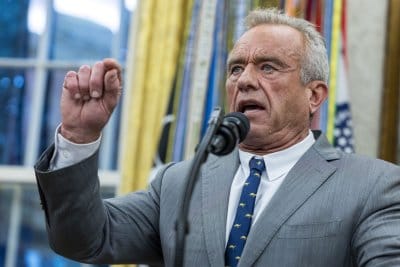
Oct. 30 (UPI) — Health and Human Services Secretary Robert F. Kennedy Jr. has said that there is not sufficient evidence to claim that Tylenol causes autism a month after the White House discouraged pregnant women and young children from using the pain reliever.
Kennedy said that while evidence does not support the claim that Tylenol causes autism, he said it should still be used cautiously.
“The causative association … between Tylenol given in pregnancy and the perinatal period is not sufficient to say it definitely causes autism,” Kennedy told reporters. “But it is very suggestive.” Kennedy cited animal, blood clotting and observational studies as the reason for his concerns over Tylenol.
“There should be a cautious approach to it,” he continued.
Earlier this week, Texas Attorney General Ken Paxon sued Kenvue, the maker of Tylenol, over health concerns. Acetaminophen, the active analgesic in Tylenol, has been widely marketed and sold for decades as an effective pain reliever and fever reducer.
Trump administration officials denied that Kennedy’s statement was a softening of his stance on Tylenol, and claimed it is consistent with his previous statements.
Kennedy said an August study found “interventions” that could be causing autism. A month later, he and President Donald Trump, neither of whom have any formal medical training, warned pregnant women against taking acetaminophen without citing any scientific evidence.
In April, the Centers for Disease Control and Prevention reported that in 2022, 1 in 13 children was diagnosed with autism by age 8, up from 1 in 36 in 2020, and a five fold increase since 2000.
Rosatom’s Virtual Reactors and the New Diplomacy of Data
The New Reactor Economy
In the twenty-first century, nuclear energy has re-emerged not only as a source of electricity but also as an instrument of geopolitical endurance. Among all global reactor exporters, Russia’s Rosatom State Atomic Energy Corporationremains exceptionally resilient. Despite sanctions and fractured supply chains, Rosatom today is involved in the construction of thirty to forty reactor units worldwide, including in Egypt’s El-Dabaa, Bangladesh’s Rooppur, and Turkey’s Akkuyu.
Yet beneath the story of uranium and concrete lies a subtler revolution: the rise of digital-twin technology. A digital twin is a virtual, data-driven replica of a reactor that mirrors every process in real time using sensors, analytics, and artificial intelligence (AI). It enables engineers to simulate performance, anticipate faults, and fine-tune safety systems remotely.
In doing so, Rosatom is no longer merely exporting atomic hardware; it is exporting data architectures and predictive-analytics ecosystems that tether partner nations to Russian digital infrastructures for decades. The company has consolidated these capabilities under its Unified Digital Platform, linking design, construction, and operation through cloud-based modelling and AI-driven monitoring (Rosatom Newsletter, 2025).
This digitalization marks a turning point in nuclear diplomacy: power now flows through algorithms and data, not only through megawatts and materials.
From Hardware Exports to Data Dependencies
Since 2020, Rosatom’s subsidiaries, notably Atomenergomash and Rusatom Service, have begun integrating digital lifecycle systems across their international reactor portfolio. The company’s engineering arm, ASE, has developed what it calls Multi-D IMS, a digital configuration-management platform that creates detailed virtual models of nuclear facilities during design and construction. These models enable real-time collaboration, fault prediction, and workflow optimization across sites, forming the foundation of Rosatom’s emerging digital-twin ecosystem.
Rosatom’s own communications describe these tools as part of a broader Unified Digital Platform, which connects design, manufacturing, and operation through cloud-based modelling and AI-driven analytics. While official statements do not identify specific plants using these systems, Rosatom notes that its “digital infrastructure and twin technologies” are being offered to international partners within its reactor export programs.
This architecture creates a durable maintenance corridor between Moscow and client operators. Even after physical construction ends, the flow of digital data and software updates ensures that Russian engineers remain integral to plant performance. In practice, the information layer itself becomes a channel of long-term engagement and influence.
Comparable Western vendors, EDF, Westinghouse, and GE Hitachi, are also pursuing digital-twin technologies. Yet Rosatom’s approach is uniquely state-integrated, aligning with Russia’s national strategy of digital sovereignty and self-sufficient AI infrastructure. The result is a hybrid of engineering innovation and strategic design: a system that embeds Russian digital standards within the nuclear industries of its partners.
For many developing economies, the offer is pragmatic: a single vendor providing financing, turnkey construction, and continuous digital assistance. But this convenience introduces a subtler dependence, one not of uranium supply or credit, but of algorithmic reliance and data governance.
Kudankulam: India’s Quiet Test Bed
Nowhere is this shift more visible than in southern India. The Kudankulam Nuclear Power Plant (KKNPP), jointly operated by India’s Nuclear Power Corporation of India Limited (NPCIL) and Rosatom, is the first operational complex of VVER-1000 reactors in the Global South.
Originally a hardware partnership signed in 1988, Kudankulam is evolving into a digital interface. In 2020, Rosatom’s fuel subsidiary TVEL supplied India with next-generation TVS-2M fuel assemblies, extending reactor cycles from twelve to eighteen months, a shift managed through digital modelling and predictive maintenance.
Rosatom’s 2024 annual report outlines plans to connect Kudankulam’s operational analytics to its Unified Digital Nuclear Industry Platform, integrating India into the same digital ecosystem that supports Turkey’s and Egypt’s projects.
For India, this offers substantial advantages, higher capacity factors, enhanced safety diagnostics, and exposure to emerging global standards in nuclear AI. Yet it also entwines India’s civilian nuclear operations with Russian data protocols and remote diagnostic tools. Kudankulam thus becomes not only a reactor but also a node in Rosatom’s global digital web, where megawatts are managed by code as much as by turbines.
This duality defines the future of strategic cooperation: efficiency through integration, balanced against data-driven interdependence.
Algorithmic Sovereignty and Strategic Autonomy
Digital integration introduces a new vocabulary of power. Terms once reserved for information technology, data sovereignty, algorithmic control, and cybersecurity now shape energy diplomacy. For countries like India, which prize autonomy, these are practical concerns.
In 2019, a cyber incident at Kudankulam briefly demonstrated how vulnerable nuclear infrastructure can be when administrative networks intersect with global data flows. Although operational systems were unaffected, the episode exposed the need for stronger digital-governance frameworks in critical energy sectors.
Another question concerns ownership of reactor data. Predictive-maintenance algorithms rely on vast datasets, coolant temperatures, pressure levels, and sensor diagnostics gathered continuously during operation. If these datasets are processed on Rosatom’s proprietary cloud, who controls their reuse or replication? India’s Digital Personal Data Protection Act (2023) mandates localization for sensitive data, yet nuclear information exists in a legal grey zone, governed more by bilateral contracts than explicit national legislation.
For Russia, digitalization ensures resilience under sanctions. Cloud-based engineering assistance allows specialists in Moscow to monitor reactors abroad even when travel or logistics are constrained. For partners, it delivers cost-efficient expertise, yet it also embeds an asymmetry; operational sovereignty becomes mediated by foreign algorithms.
Rosatom’s approach reflects Moscow’s broader strategy of technological statecraft, using digital ecosystems to sustain global reach despite economic isolation. The outcome is a new form of dependence: not energy insecurity but informational dependency.
Atoms → Algorithms: The Next Frontier of Energy Diplomacy
Rosatom’s digital transformation parallels wider trends in global technology politics. China’s Digital Silk Road, the U.S.-EU “trusted-tech” frameworks, and Russia’s own push for a “Digital Atom Belt” all reveal how infrastructure and information are converging.
India occupies a delicate middle ground. Collaboration with Rosatom at Kudankulam grants access to advanced analytics, but New Delhi also explores partnerships with Western firms on small modular reactors and new fuel cycles. Balancing these engagements will require clear rules on digital interoperability, data governance, and cyber assurance.
India already has the institutions to do so. The Atomic Energy Regulatory Board (AERB) verifies reactor-control software domestically, while CERT-IN supervises cyber-critical infrastructure. Extending such oversight to digital-twin and predictive-maintenance platforms can preserve sovereignty while encouraging innovation.
For Russia, meanwhile, digital twins are both export products and diplomatic instruments. By embedding AI-based support systems in every reactor project, Rosatom ensures long-term relevance. Even if hardware exports slow, its role as a digital-lifecycle provider guarantees enduring engagement. In that sense, Rosatom’s most influential reactor export may no longer be physical; it is virtual.
Conclusion: The Politics of Invisible Power
The shift from atoms to algorithms defines the next frontier of nuclear diplomacy. During the Cold War, power was measured in reactors built or megawatts produced. Today, it is determined by who controls the data that sustains those reactors.
For partner nations, digital twins promise transparency, efficiency, and safety. For exporting powers, they offer a quiet form of leverage that persists beyond physical construction. As India pursues self-reliance through Make in India and Atmanirbhar Bharat, it must treat data infrastructure with the same strategic weight as fuel supply chains.
The aim should not be isolation from partners like Russia but reciprocal digital governance, shared access protocols, transparent algorithmic audits, and domestic data custody. Rosatom’s digital twin diplomacy exemplifies a future where technological cooperation and strategic caution must coexist.
The next great non-proliferation challenge may not concern uranium enrichment but data enrichment: who holds it, who protects it, and who decides how it is used?
Elton John could have made an album with anyone but choosing to me is such a compliment, says singer Brandi Carlile
IT’S album release day when I connect with Brandi Carlile at her Seattle home, by video call.
The US folk-country singer’s ninth album, Returning To Myself, has just been released globally and the smile across her face says it all.
It’s already been a great year for Carlile, who in April celebrated her first UK No1 album with Who Believes In Angels? — the collaboration with her idol, Sir Elton John.
She says: “I’m lucky to have new chapters — not everyone gets to have a renewal in their forties.
“And I’m really excited about it. I want to keep going. I like getting older — that’s my favourite bit of life so far.”
The singer believes that authenticity has come with age, and that confidence shines through her new music.
It’s also her enduring friendship with Sir Elton John that has helped elevate her profile on the international stage.
She says: “I’m astounded by Elton’s generosity. He could have made an album with anyone — and choosing to make it with me was such a compliment.
“He’s the most iconic living artist on the planet but what that did for me emotionally is something I try not to put on his shoulders, so that he can exist independent of my expectations of him.
“But it did a lot for me, because he is my hero and we have a special chemistry as friends.“
Returning To Myself is a record that allows Carlile to reconnect with her own emotions and finds her in an introspective mood — and there’s even a solo version of You Without Me, previously a collaboration with Elton John.
She says: “It’s a song that’s pertinent to my life and age and there’s been a lot of reflection.
“My career reminds me of what happened in Bonnie Raitt’s career.
“She’d been making music for a long time, living in vans, in and out of clubs and theatres and playing with all these different bands. Then one thing changed, and suddenly it was on.
“When it happens to you, you remember how long it took for the phone to ring.
“Suddenly it’s ringing and you’re just answering and saying yes and wanting to do everything, understanding that it won’t ring one day.
“I stayed in a cycle of that mentality for many years, just attaching to everyone that ever inspired me.
“I wanted everything all at once. Then I just hit a wall. My mind and body give me no warnings. They just shut down one day. It meant I should take time off.
“But what do you do when the songs are coming? You have to listen to that and then take action.”
The songs were coming like a tap was on, and I can’t turn it off once that happens. I just don’t function — I don’t change my clothes, I don’t sleep, I forget to eat, I’m just a dysfunctional person
Brandi Carlile
On Returning To Me, Carlile teamed up with producer Aaron Dessner of The National — who worked with Taylor Swift.
She also brought in producers Andrew Watt, who she worked with on the Elton John album, and Bon Iver’s Justin Vernon who helped produce the track Human.
The title track began with a poem Carlile wrote when she was dealing with loneliness while staying at the barn-house guest room at Aaron Dessner’s remote home in upstate New York.
She says: “It came from a place of contemplation, and my discomfort with aloneness. It’s me asking some existential questions.
“The songs were coming like a tap was on, and I can’t turn it off once that happens. I just don’t function — I don’t change my clothes, I don’t sleep, I forget to eat, I’m just a dysfunctional person.
“I wrote one or two out there with Aaron that were really deep and meaningful to me.”
She adds: “I was at Aaron’s the day after Joni Mitchell played the Hollywood Bowl and I was moved by her triumph there and deep in thought about the journey it took us to get there.”
Carlile had helped with the esteemed singer’s six-year journey to return to the live stage — her Hollywood Bowl performance was Mitchell’s first full show in 24 years — following a brain aneurysm in 2015 that had left the singer unable to play.
Carlile had been part of a jam band alongside Mitchell, Elton John, Meryl Streep, Annie Lennox, Marcus Mumford and more.
Carlile had first met the legendary singer at her 75th birthday tribute concert in 2018, then began organising monthly music evenings, called Joni Jams, at her Bel-Air house.
Elton, Sir Paul McCartney, Bonnie Raitt and Harry Styles all joined in encouraging her return to singing.
She says: “It wasn’t getting through to her about how much she was loved and it bothered me. It nagged at me. If only she knew what Lana Del Rey says about you. If she knew that Gracie Abrams had her lyrics tattooed on her arm.
“She is so important to multiple generations of not just women, but all people, and so I got to have the passenger seat to watching that reality wash over Joni as she pulled herself into recovery from her aneurysm.
“I get too much credit for what happened with Joni as she got herself back on stage and retaught herself how to use those instruments.
On Returning To Myself, Joni is one of the standout songs, which pays homage to her heroine.
She says: “Writing a song about her, I couldn’t be sappy because she’s not going to like that.
“Joni has got a great sense of humour. She’s wildly intelligent but I wanted to point out the most profound things about her. I also wanted to show how wild she is and how much she loves a party because she is fun.
“She’s such a reverential character and people have so much respect for that. Some people see her as stern, and I wanted to address that in a tongue-in-cheek way in the song in a way that she would understand, yeah, and she really did understand.”
Carlile believes her work with both Elton John and Joni Mitchell has been life-changing. She says: “It’s everything when you’re growing up and when you get to meet the people that you’ve had on your bedroom walls.
“It’s more than music. I get how important it is to work with these people because I am a f***ing fan. That’s why I champion women in music. When young musicians come up to me and say I inspire them too, I get that as I am still a fan.”
Returning To Myself is a different sound for Carlile — it’s stripped back and self-assured.
She says with a laugh: “When I was younger, I would scream all the time. I was yelling and singing open-chested and I’d tell myself that when I got older, I was never going to be quiet — I was going to stay punk-rock.
‘Oppressive ideology’
“And to a certain extent, I stand by that, but sometimes the lyrics you write don’t ask that. They asked for it on the song Church And State, and at the end of Human, but they don’t ask for it anywhere else on the album.
“It just wouldn’t do justice to the poetry, so I just didn’t do it. That’s not to say I won’t do it again.”
Evangeline, our oldest, asked could we move to Canada if the United States overturned gay marriage. But Elijah, our youngest, is worried she won’t have a Mommy or a Mama — which we are called
The politically inspired Church And State is a powerful song born out of frustration and anger about US President Donald Trump and his challenges to American institutions.
She says: “Activism is important to me and important enough to never dilute it.
“That song is about the separation of the church and state and how important that is to me and my family.
“We are not living in a theocracy. There’s no wisdom creating laws and building walls based on a subjective interpretation of someone else’s faith.
“You can’t use so-called Christian values to enable an oppressive ideology. As a person of faith myself, I can tell you I feel as protective of my faith against the state as I do a quasi-secular person living in the United States.”
A mother of two daughters with her wife, Catherine, Carlile admits recent events have scared her kids.
She says: “I read this morning that the Supreme Court in the US is going to consider a case which would overturn marriage equality in November.
“It’s something I’ve been afraid of for a long time, since [former Associate Justice of the Supreme Court] Ruth Bader Ginsburg died [in 2020].
“I’ve been afraid of us going backward on that sentiment.
“It’s not me and my life that it concerns. I’ve been talking to my wife about this for a long time — and our kids listen to like everything.
“Evangeline, our oldest, asked could we move to Canada if the United States overturned gay marriage. But Elijah, our youngest, is worried she won’t have a Mommy or a Mama — which we are called. She’s worried she won’t have parents — and it made me so angry.”
Carlile also joined forces with Elton John for a joint HIV/Aids campaign earlier this year to try to offset the Trump administration’s cuts to HIV/Aids- related funding.
She says: “It’s desperately important to Elton and [husband] David [Furnish] that it’s not pushed from the sphere of public awareness and we’re able to continue to educate and alleviate the suffering of people.
“And that’s how I found Elton John as an 11-year-old, as I wrote a book report on a young boy who had died of Aids.
“I had already canonised the man as a saint, but because of this report I went to the library and checked out a CD with his song Skyline Pigeon on it because this man had played at this kid’s funeral.
“It was a full-circle moment that later I was able to lend my activism to the person who inspired me to start it.”
Carlile will have a small break for Christmas before kicking off her tour early next year.
She says with a laugh: “I hope the tickets sell. I don’t know how to switch off. I want to be cool and say, ‘I don’t read reviews, I don’t watch the tickets’. But no, I’m going to be sitting there digesting my stomach lining.
“I just want to get out and play. I love this album and am going to play it from start to finish, and I’ve got all these ideas for covers.
“I’ve got a world-class band and so next year is going to be another big year for me — and I’m loving it all.”
- Returning To Myself is out now
BRANDI CARLILE
Returning To Myself
★★★★☆
Friday 31 October All Saints day in Philippines
The origin of All Saints’ Day may date back to a Greek Christian tradition from the 4th century when a festival was held to honour saints and martyrs on the Sunday following Pentecost.
The first recorded All Saints’ Day occurred on May 13th 609 AD when Pope Boniface IV accepted the Pantheon in Rome as a gift from Emperor Phocas. The Pope dedicated the day as a holiday to honour the Blessed Virgin and all the martyrs.
In 835 AD, during the reign of Pope Gregory III, the festival was moved to 1st November and was expanded to include the honouring of all saints, including those whose sainthood is only known to God.
It is likely that 1st November was intentionally chosen to replace the pagan feast of the dead, Samhain. The night before Samhain was a time when evil spirits roamed the land looking for humans. To confuse the spirits, people would dress up as creatures. This tradition carried on after November 1st became a Christian festival, hence the name of Halloween – which is a shortened version of All Hallows’ Eve.
The day survived the Reformation, though the Protestants combined it with All Souls’ Day, which was on November 2nd.
The day was abolished as a church festival in 1770, but may be celebrated by many churches on the first Sunday in November.
In Roman Catholicism, All Saints’ Day is a Holy Day of Obligation. This means Catholics must go to Mass on the date unless there is a good reason not to attend, such as illness. Whenever November 1st falls on a Monday or a Saturday adjacent to the Sunday sabbath, Catholics are encouraged but not required to attend mass.
Coachella mayor indicted on charges of perjury, conflict of interest
INDIO, Calif. — A Riverside County criminal grand jury indicted the longtime mayor of Coachella on nine counts, including one felony charge of violating conflict of interest rules related to government contracts and four felony counts of perjury.
Steven Hernandez, 42, who has served on the Coachella City Council for nearly two decades, pleaded not guilty Thursday morning at the Larson Justice Center in Indio.
Hernandez was a rising politician in Riverside County and Coachella, an agricultural city of 42,500 people about 130 miles southeast of Los Angeles. If convicted as charged, Hernandez would be barred from public office for life and face more than seven years in state prison, according to Riverside County Dist. Atty. Mike Hestrin.
Hernandez was raised in Coachella by his grandparents, who were migrant farmworkers. He was first elected to the council in 2006, becoming an integral part of a powerful group of Latino politicians in the valley east of Palm Springs. Under his leadership, the city made major infrastructure investments in its downtown, including an expanded library, a new senior center and a new fire station.
But Hernandez allegedly benefited from some of the votes he cast from the dais, catching the attention of the Riverside County District Attorney’s office.
The indictment, unsealed Thursday, charges Hernandez with several misdemeanors for using his role as a public official to influence governmental decisions in which he had a financial interest. Among those were votes, cast between 2021 and 2023, to use pandemic-era American Rescue Plan Act funds to rehabilitate the downtown fire station, as well as votes on a commercial project known as Fountainhead Plaza, an affordable apartment community called the Tripoli Mixed-Use project, and a transit hub near downtown.
It also charges Hernandez with a felony for “willfully and unlawfully” approving a contract in which he had a financial interest when when he voted for an agreement between the city and the Coachella Valley Assn. of Governments’ Housing First program, which serves chronically homeless people.
An Assn. of Governments spokesperson said the organization has fully cooperated with the district attorney’s office and grand jury and “there has never been an implication from investigators that the investigation had anything to do with actions by elected officials serving in their CVAG capacity.”
The perjury charges relate to claims made by Hernandez on his Statement of Economic Interests public disclosure forms, also known as the Form 700, the district attorney said.
The indictment named 13 witnesses who testified before the criminal grand jury, including a city council member, the city’s economic development director, a former council member and a former city manager.
Hernandez will remain mayor of Coachella “until otherwise notified,” according to city spokesperson Risseth Lora.
Along with serving on the city council, Hernandez works as the chief of staff for Riverside County Supervisor V. Manuel Perez. He was placed on “indefinite administrative leave” from the county, Perez said in a statement Wednesday, adding: “Although we are still waiting on more details, it’s our understanding that the charges are unrelated to his role in our office.”
Hernandez surrendered to Riverside County Sheriff officials at the Robert Presley Detention Center in Riverside on Tuesday and posted $112,500 bail. He appeared before Riverside County Superior Court Judge John J. Ryan on Thursday morning. Wearing a navy suit, he clasped his hands behind his back as his attorney entered the plea.
He donned sunglasses as he left the courtroom.
This article is part of The Times’ equity reporting initiative, funded by the James Irvine Foundation, exploring the challenges facing low-income workers and the efforts being made to address California’s economic divide.
Football gossip: Etta Eyong, Zirkzee, Osimhen, Filling, Panichelli, Read, Garcia, David
Premier League clubs fight for Karl Etta Eyong’s signature, AC Milan interested in Joshua Zirkzee loan, Manchester United not pursuing Kevin Filling and Chelsea lead race for Kenan Yildiz.
Manchester City, Manchester United and Arsenal are in the running to sign 22-year-old Cameroon and Levante forward Karl Etta Eyong, who wants to resolve his future in January with Barcelona and Real Madrid also interested. (Mundo Deportivo – in Spanish, external)
Manchester United are not currently pursuing AIK’s Kevin Filling, despite reports they are in negotiations to sign the 16-year-old Swedish forward. (Manchester Evening News, external)
AC Milan could join the clubs interested in Manchester United forward Joshua Zirkzee, 24, if the Netherlands international is available on loan in January. (Gazzetta dello Sport – in Italian, external)
German champions Bayern Munich have entered into talks to sign 19-year-old Givairo Read, the Feyenoord and Netherlands Under-21 full-back who is also a target of several Premier League clubs including Liverpool. (Sky Sports – in German, external)
Former Tottenham and Nottingham Forest manager Ange Postecoglou is very unlikely to become Celtic’s next boss, with Ipswich Town’s Kieran McKenna and Wales head coach Craig Bellamy among the candidates. (Sky Sports, external)
Galatasaray striker Victor Osimhen, 26, is still on Barcelona’s radar, but they are deterred by the price tag of the Nigeria international. (Mundo Deportivo – in Spanish, external)
Chelsea have emerged as favourites to sign Juventus forward Kenan Yildiz, 20, after tabling an exciting proposal for the Turkey international, but Arsenal, Manchester United and Liverpool are keen too. (Teamtalk, external)
Chelsea are actively working to sign Joaquin Panichelli from Ligue 1 side Strasbourg, but AC Milan have also shown interest in the 23-year-old Argentine striker. (Fichajes – in Spanish, external)
Barcelona defender Eric Garcia has agreed terms on a new Barcelona contract, despite the 24-year-old Spain international attracting interest from Chelsea and Tottenham. (TBR Football, external)
Tottenham will look to sign Juventus and Canada striker Jonathan David during the January transfer window, with Bayern Munich also eyeing the 25-year-old. (Fichajes – in Spanish, external)
Pakistan and Afghanistan agree to maintain truce for another week: Turkiye | Conflict News
Pakistan has accused Afghanistan of harbouring the Pakistan Taliban, a charge Kabul denies.
Published On 30 Oct 2025
Pakistan and Afghanistan have agreed to extend a ceasefire for at least another week during talks in Turkiye, the Turkish Ministry of Foreign Affairs said.
The sides plan to meet again at a higher-level gathering in Istanbul on November 6 to finalise how the ceasefire will be implemented, the ministry said in a statement released on behalf of Pakistan, Afghanistan and mediators Turkiye and Qatar.
Recommended Stories
list of 3 itemsend of list
“All parties have agreed to put in place a monitoring and verification mechanism that will ensure maintenance of peace and imposing penalty on the violating party,” the statement read.
The two neighbours engaged in a weeklong border conflict earlier this month following explosions in Afghanistan, which the Afghan government blamed on Pakistan.
In the subsequent cross-border strikes, Pakistan’s military claimed it killed more than 200 Afghan fighters, while Afghanistan says it killed 58 Pakistani soldiers.
It was the most serious fighting between the two countries since the Taliban regained control of Kabul in 2021.

After the skirmishes, mediation by Qatar and Turkiye led to a ceasefire signed by the defence ministers of Pakistan and Afghanistan on October 19 in Doha.
The two nations — which share a 2,600-kilometre (1,600-mile) frontier — began a second round of talks in Istanbul on Saturday, which broke down Wednesday when both parties failed to reach a consensus on Islamabad’s central demand that Kabul crack down on Tehreek-e-Taliban Pakistan, an armed group often called the Pakistan Taliban or TTP, which has been long accused by Pakistan of carrying out deadly attacks inside its territory.
The Afghan government has consistently denied that it provides safe haven for the group.
Talks resumed on Thursday, leading to the agreement to maintain the ceasefire until a new round of talks on November 6.
Afghan government spokesperson Zabihullah Mujahid issued a statement confirming the conclusion of the talks and saying both sides had agreed to continue discussions in future meetings. Pakistan did not immediately comment.
While a ceasefire remains in place, the border between the two countries has been closed for more than two weeks, leading to mounting losses for traders in the region.
In Kandahar on the Afghan side, Nazir Ahmed, a cloth trader, told the newswire AFP both countries “will bear losses.”
“Our nation is tired and their nation is also tired,” the 35-year-old said Wednesday.
Abdul Jabbar, a vehicle spare parts trader in the Pakistani border town of Chaman, said “trade suffers greatly”.
“Both countries face losses — both are Islamic nations,” he told AFP.




